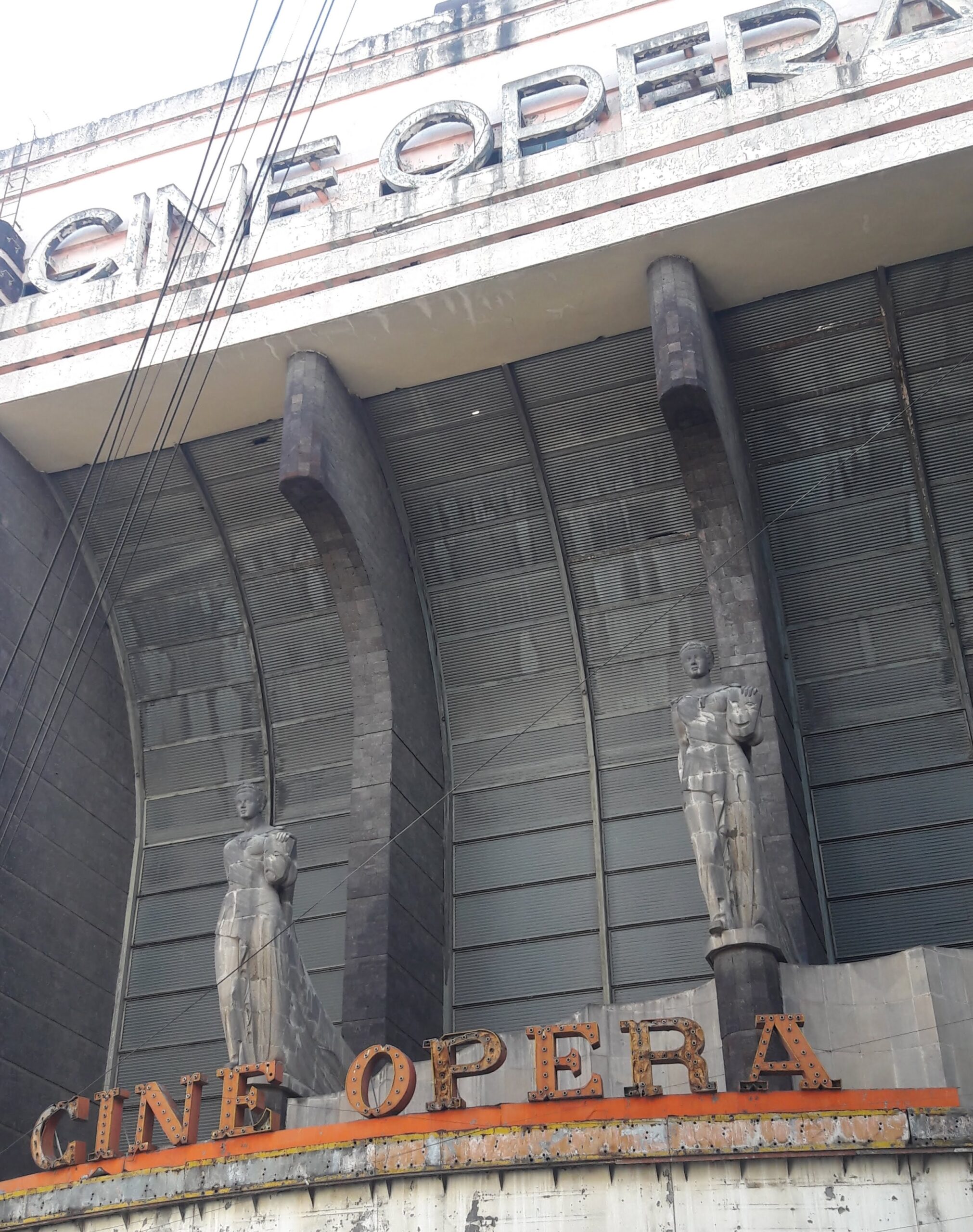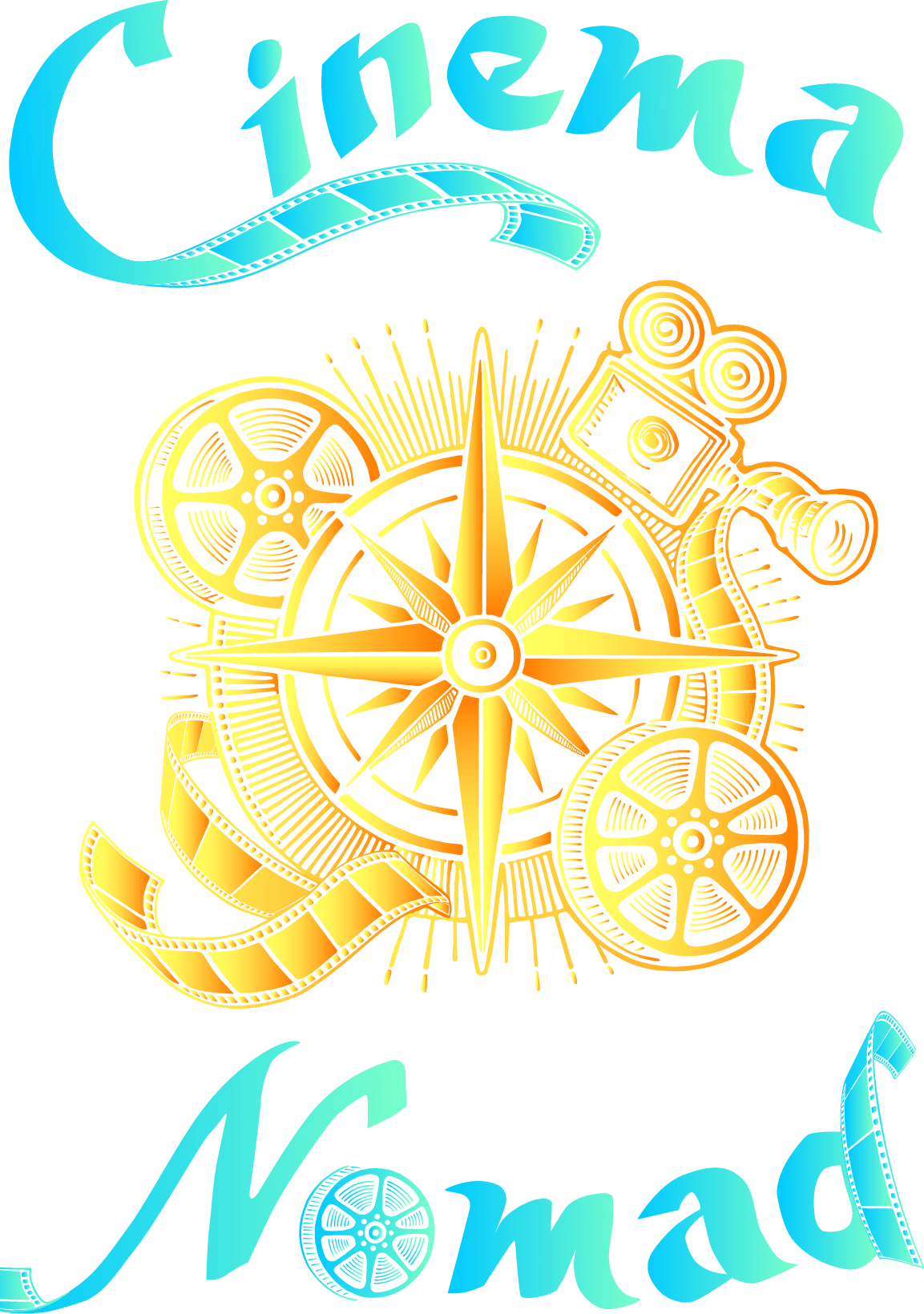
México
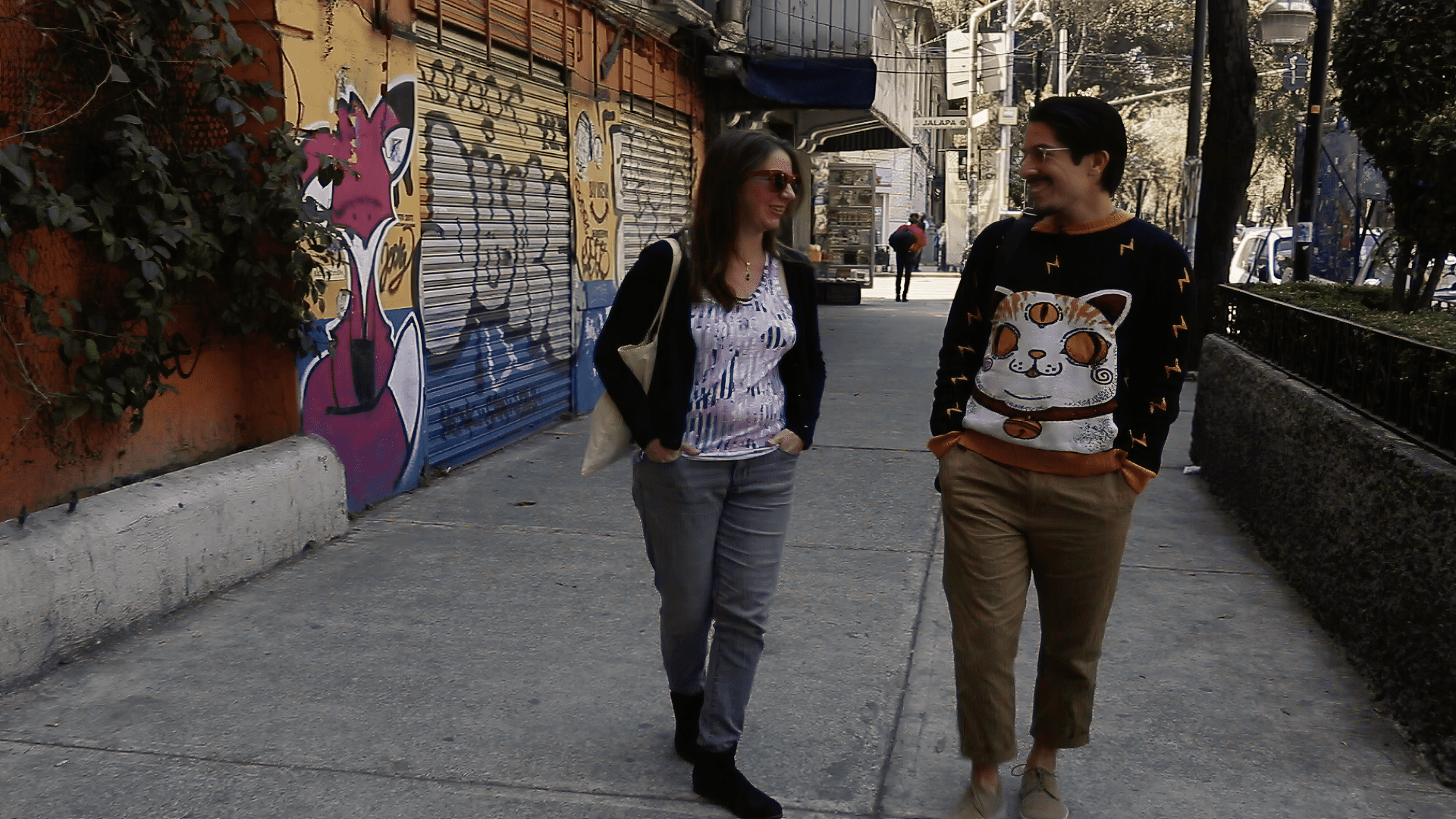
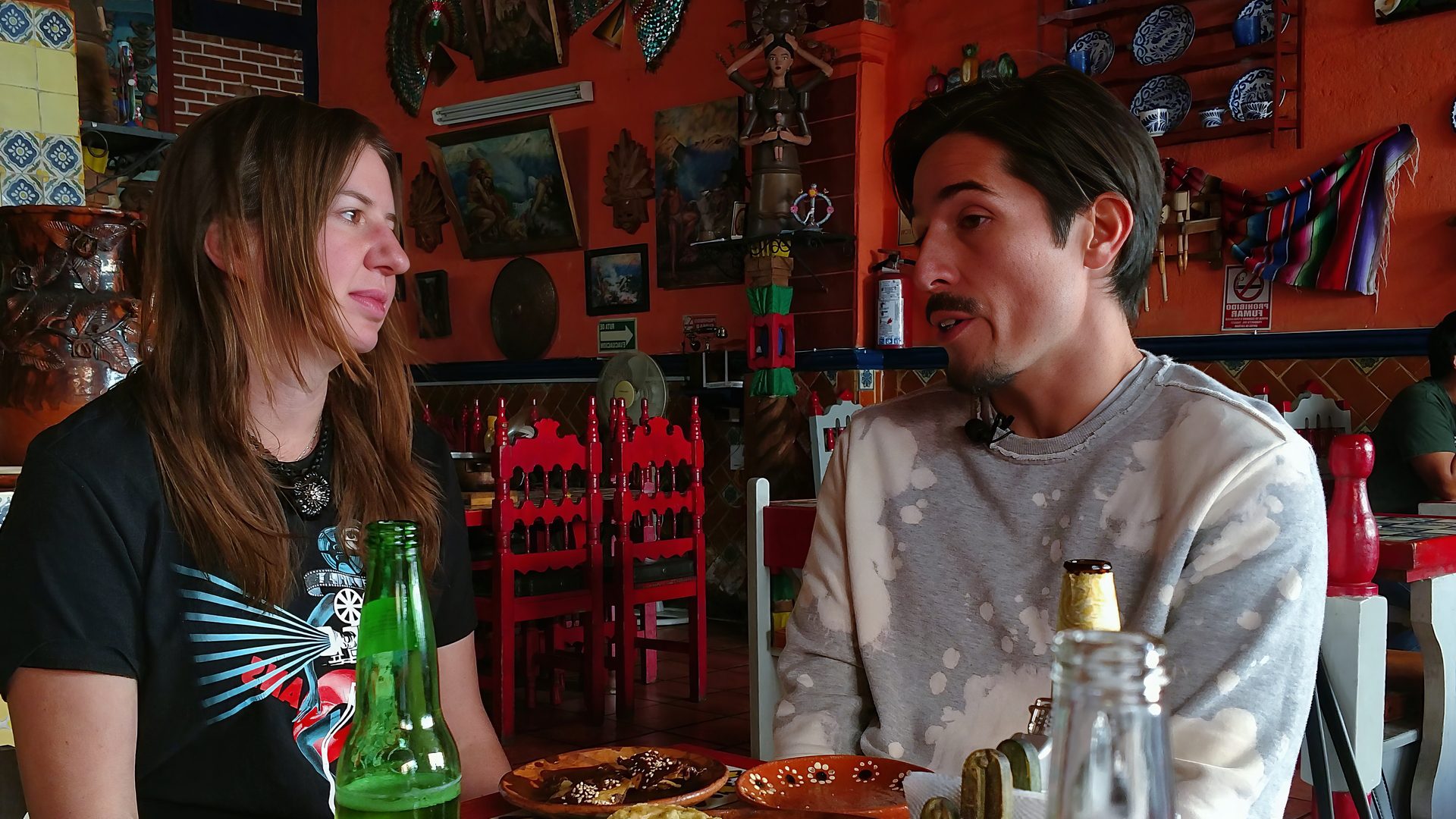
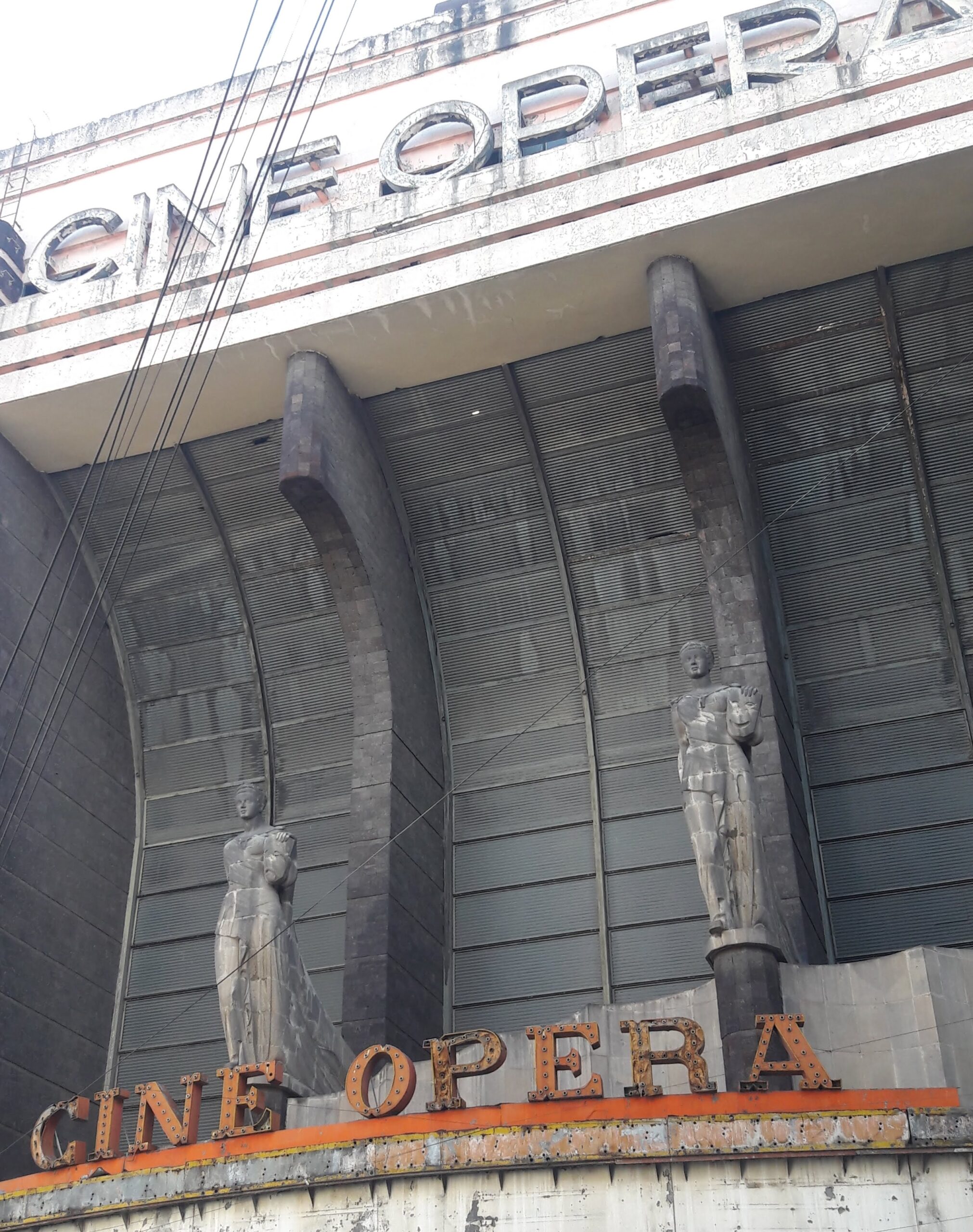

112: México
We visit Atzin in Mexico City, where he shows us a rich history of cinema, including the Golden Age of the 1930s and ‘40s. Stephanie explores her love of Mezcal, and Atzin takes us to his hometown of Puebla to meet his hospitable mother, who has the personality of a Golden Age star. Atzin has made incredible films with universal appeal, but finds himself asking, “Are my films Mexican enough?”
Where Were You at 33?
Name: Atzin Ortiz González
Place: Mexico City, Mexico
Age at Filming: 33
Personal logline: “A small observer overwhelmed by his context.”
Directed by Atzin: “Permanencia Voluntaria” (2010), “Post Mortem” (2011), “Viceversa” (2012), “Ana y Eme” (2013), “#Hashtag” (2019) and “Entre Tierras” (2023)
Atzin’s “Desert Island” Films: “Lost in Translation” (2003) directed by Sofia Coppola, “Last Year at Marienbad” (1961) directed by Alain Resnais, “Playtime” (1967) directed by Jacques Tati, “The Exterminating Angel” (1962) directed by Luis Buñuel and “Twin Peaks: The Return” (2017) directed by David Lynch
Atzin’s “Guilty Pleasure” Film: the “Friday The 13th” franchise, starting with “Friday The 13th” (1980) directed by Sean S. Cunningham
Atzin’s Instagram: @aaaaatzin
“Entre Tierra’s” Instagram: @entretierras.betweenlands.film
Atzin’s Vimeo: https://vimeo.com/atzinog
Atzin’s YouTube: @atzinortizgonzalez
Atzin’s Letterbox: https://letterboxd.com/atzinog/
Atzin’s Bio:
Atzin is a prolific filmmaker who has written, directed and produced over six short films including #Hashtag (2019), “Ana y Eme” (2013), “Vice Versa” (2012), “Post Mortem” (2011) and “Permanencia Voluntaria (2010). After studying filmmaking in Argentina and living in Buenos Aires for eight years, he returned home to Mexico to pursue his filmmaking career. Atzin directed an award-winning feature documentary, “Entre Tierras” (2023) about Mexican migrants who were returned home from the U.S.
He is the co-writer of the feature narrative film, “Ceremonia” (2025) directed by Dan Chavez.
Cinema of México
The Mexican film industry is the third largest in Latin America, known mostly for its famous three amigos: directors Guillermo del Toro (“Cronos,” “The Devil’s Backbone,” “Pan’s Labyrinth,” “The Shape Of Water”); Alfonso Cuarón (“Y tu mamá también,” “Children Of Men,” “Gravity,” “Roma”); and Alejandro Iniritu (“Amores Perros,” “Babel,” “Biutiful,” “Birdman,” “The Revenant”): all men of the same generation from Mexico who have managed to successfully break into Hollywood, and continue to bring home awards.
The first film screening in Mexico occurred in 1896 in Mexico City, exhibiting the Lumière Cinématographe. About a year after the first screening, locals were filming their own newsreels and actualities. Around this same time, the first cinema exhibition space was opened in Mexico City, the Salón Rojo.
Salvador Toscano Barragán was the director of the first narrative film in Mexico, “Don Juan Tenorio” (1898) based on a play from 1844. He later became one of the filmmakers documenting the Mexican Revolution (1910-1920), a war that is considered to be one of the first major world events to be so fully documented on film.
Many filmmakers from around the world came to Mexico to film the revolution, and out of this, came a mix of documentary and fiction films. And for many decades to follow, Mexican filmmakers have been fascinated with telling stories of the Mexican Revolution.
For instance, the Mexican Revolution hero Pancho Villa starred in Raoul Walsh’s biopic, “The Life of General Villa” (1914), shot on location during the civil war.
President Porfirio Díaz was perhaps the first head of state to be captured on film, helping to boost his growing celebrity, and he even commissioned films to be made of him horseback riding in Chapultepec Park, doing state duties, and engaging with Thomas Edision.
After the introduction of sound, the first feature-length film made in Mexico was called “Santa” (1932), adapted from a novel by Federico Gamboa. The soundtrack it featured was a new innovation, created by Joselito and Roberto Rodríguez and referred to as “The Rodríguez Sound System.”
The 1930’s brought to Mexico some other prominent international filmmakers, including Soviet filmmaker Sergei Eisenstein, who filmed “Que Viva Mexico” in 1931, a tapestry of Mexican life from the old landscape of the Tehuantepec, to capturing bullfights, and “Day of the Dead” celebrations.
In 1934, “Redes” was made, co-directed by Mexican born Emilio Gómez Muriel and Austrian born Fred Zinnemann. A drama filmed with documentary elements, using real life fishermen as actors, the film captured the daily struggles and political ideals of men surviving in coastal villages near the Gulf Of Mexico.
Famed Spanish director Luis Buñuel moved to Mexico, and considered it home, making all his films there between 1946 and 1960, notably “Los Olvidados” (also known as “The Young and the Damned”) and “Nazarín” (1958).
“Salt of the Earth” (1954) was also made in Mexico, directed by exile Herbert Biberman, who was blacklisted from Hollywood during the “red scare.”
Mexico’s own cinematic glories flourished during what is known as the Golden Era, from about 1936 to 1959; known for its slapstick comedy, pastoral settings and ranchera music.
During World War Two, much of the U.S. and European-centric film production curtailed and Mexico swept in to take advantage of this gap in the industry. Its geographic proximity to Hollywood also helped Mexico to become recognized on an international scale. It is even said that the Oscar statuette is modeled after Mexican director, Emilio Fernández!
Mexican actress femme fatale María Félix became a superstar and appeared in such notorious golden era flicks as Doña Bárbara (1943) directed by Fernando de Fuentes and Miguel M. Delgado; “María Candelaria” (1944), and “Enamorada“ (1946) both directed by Emilio Fernández. During this Golden age, heartthrobs Pedro Infante and Jorge Negrete charmed Mexican audiences for years. Both were actor-singers, and the cinema of Mexico helped bring about an awareness to Mariachi music around the world. Of course mariachi music came first, but the cinema of the ‘30s, ‘40s, and ‘50s celebrated, explored, and even exploited it to the point that mariachi became even bigger than its britches! Many scholars believe, in fact, that the overriding association with Mexico and mariachi is because of these films and their popularity both in Mexico and abroad!
The first film school was opened in Mexico in 1963, University Center for Cinematic Studies, but overall, productions declined in the decades following the Golden Era, partially due to economic crises and lack of public or private funding.
However, in the 1970s and ‘80s there were genre films that became popular such as “spaghetti westerns” filmed near the U.S. and Mexican border, melodrama romances, and “wrestling films.”
A state funded film festival rose up in the 1980’s, as well as the Mexican Cinema Institute.
The release of the movie adaptation of “Like Water For Chocolate” directed by Alfonso Arau in 1993, adapted from his wife, Laura Esquivel’s, magical realism novel of the same name, helped to revive the cinema of Mexico. And by the early 2000s, a new film movement started gaining speed with movies made and popularized, such as “Y tu mamá también” (2001) directed by Alfonso Cuarón, and “The Crime Of Father Amaro” (2002) directed by Carlos Carrera.
In 2019, Alfosno Cuarón made Mexican cinema history with his 2018 film “Roma,” when it was nominated for 10 Oscars, including Best Picture AND Best Foreign Film. Cuarón took home the Oscar for Best Director, Best Cinematography and Best Foreign Film.
The “Three Amigos” directors now have a combined total of 28 Oscars among themselves.
Some Websites that discuss Mexican Cinema:
https://researchguides.dartmouth.edu/nationalcinemas/mexico
https://www.mexperience.com/going-to-the-movies-in-mexico/
https://kananfilms.com/guide-to-filming-in-mexico/
https://www.bfi.org.uk/sight-and-sound/features/deep-focus-golden-age-mexican-cinema
https://mexico.arizona.edu/revista/film-discovering-mexican-cinemas-new-golden-age
https://tmff.net/the-main-characteristics-of-mexican-cinema/
https://cinemawavesblog.com/movements-page3/new-mexican-cinema/
https://www.cinematropical.com/mexican-popular-cinema
https://www.nytimes.com/2024/07/26/movies/mexico-cantinflas-maria-felix.html
https://amigoenergy.com/blog/mexican-cinema-movies/
https://www.mexicomavens.com/culture/good-mexican-movies-a-guide-to-must-watch-cinema-gems/
https://www.filmlinc.org/series/spectacle-every-day-mexican-popular-cinema/
https://news.stthomas.edu/publication-article/reel-revolutions-in-mexican-film/
Suggested Films From Mexico:
“Redes” (1935) directed by Emilio Gómez Muriel and Fred Zinnemann
“La Oveja Negra” (1942) directed by Ismael Rodríguez
“Doña Bárbara” (1943) directed by Fernando de Fuentes and Miguel M. Delgado
“María Candelaria” (1943), “Enamorada” (1946), “The Pearl” (1947) and
“Río Escondido” (1948) directed by Emilio Fernández
“Macario” (1960) directed by Roberto Gavaldón
“The Exterminating Angel” (1962) directed by Luis Buñuel
“Cronos” (1992) directed by Guillermo del Toro
“Amores Perros” (2000) directed by Alejandro González Iñárritu
“Y tu mamá también” (2001) directed by Alfonso Cuarón
“The Devil’s Backbone” (2001) directed by Guillermo del Toro
“The Crime Of Padre Amaro” (2002) directed by Carlos Carrera
“Pan’s Labyrinth” (2006) directed by Guillermo del Toro
“Biutiful” (2010) directed by Alejandro G. Iñárritu
“Tempestad” (2016) directed by Tatiana Huezo
“Roma” (2018) directed by Alfonso Cuarón
“Tótem” (2023) directed by Lila Avilés
Entre Tierras (2023) directed by Atzin Ortiz González
“Ceremonia” (2025) directed by Dan Chavez
Cinema Landmarks To Visit:
Articles that discuss Film Locations in Mexico:
There are many movies made in Mexico, all across the country, locations that are worth your exploration. Also, for filmmakers, there is a diversity of locations to film in. These links provide you with information for both:
https://www.vogue.com/article/travel-via-cinema-mexico
https://fixermexico.com/film-locations-in-mexico/
Mexico City Cinema History Walking Tour
https://www.travelagewest.com/Travel/Mexico/Visit-Mexico-s-Famous-Filming-Locations
https://kananfilms.com/filming-in-mexico-5-locations-that-offer-the-world-in-one-country/
https://www.park-royalhotels.com/en/blog/movies-recorded-in-mexico.html
https://thedrunkweddingphotographer.com/summerimperfect/nacho-libre-filming-locations
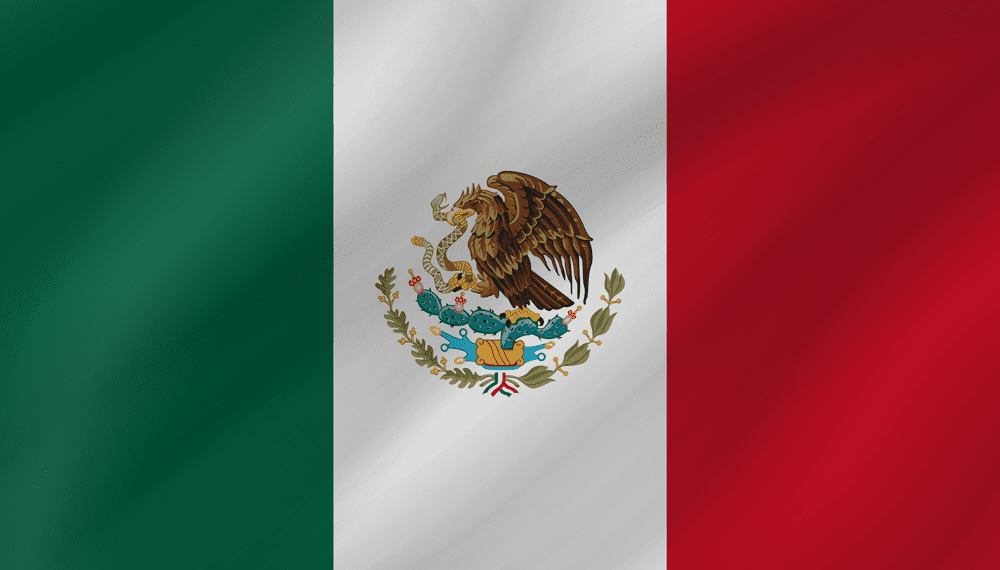
Official Name: United Mexican States
Population: 130 million
Capital City: Mexico City
Form of Government: Republic of Federated States
Official Language:
Spanish (de facto language) with various indigenous languages recognized
Currency: Mexican Peso
Borders: Guatemala, Belize, USA, Gulf of Mexico, Gulf of California and Pacific Ocean
About Mexico
Officially, the United Mexican States, this country of 130 million is made up of 31 states and 1 federal district.
The name “Mexico” dates back to the Aztec peoples, as well as the symbol in the center of the Mexican flag is based on an ancient Aztec prophecy, from 1325. The Aztecs were told to build their capital city at the spot where they found a snake in an eagle’s beak standing on a nopal (a tender cactus). This spot was Tenochtitlán, where present-day Mexico City lies. Tenochtitlán was built on a grand lake, Lake Texcoco, and between 100 B.C.E. and 700 C.E., the pre-Columbian city, present day Mexico City, was the largest city in the Americas.
Capital City, Mexico City, with a population of 25 million, is one of the largest, oldest, and most congested places in the world. Mexico City is known as CDMX, an abbreviation of its Spanish Name, Ciudad de México. Today, Mexico City is said to have more museums than any other city in the world, except for London.
Human history in Mexico dates back at least 13,000 years. Modern society, government and politics would not exist as we know it without the civilizations of pre-Columbian Mexico.
Such contributions include a sophisticated writing system, calendars, astronomy, agriculture, mathematics and more.
From the Olmecs (~ 1200 BCE to 400 BCE) to the Zapotecs (~700 BCE to 1500 CE); the Maya (~2000 BCE to 1697 CE) to the Aztecs (~1300 CE to 1521 CE), the history of Mexico is rich.
And massive cities were built! At the height of their empire, the Aztecs ruled 5 million people.
Then the Spanish explorer, Hernán Cortés, arrived in Veracruz in 1519, and by 1521, he conquered the Aztec territory, renaming it New Spain.
The diseases brought in by the Spanish devastated the indigenous population.
As a result of Spanish colonization, the influence of the Catholic church rose exponentially, and today, around 78% of Mexicans consider themselves Catholic.
Mexico declared independence on September 16, 1810, and fought a war that lasted 11 years until Spain accepted this independence.
100 years after that, Mexicans would rise up again to fight against unequal distribution of land, wealth, and power. This was the Mexican Revolution, from which its current 1917 constitution hails.
Mexico is the 6th most traveled country in the world, and its 2.6 trillion dollar economy is the fifteenth largest in the world; larger than Turkey and Sweden combined. Tourism is a major part of Mexico’s economy, as well as manufacturing, mining, and farming.
Geographically, Mexico is diverse. The center of the country consists of a large valley surrounded by mountains. There are low plains near the coasts, beautiful beaches, and a large River, Río Bravo del Norte (known as the Rio Grande in the U.S.), which forms part of the 1,954 mile border with the United States of America.
Because of its unique proximity to five different tectonic plates, Mexico is prone to Earthquakes.
About Oaxaca:
Approximately 285 miles from Mexico City, Oaxaca is situated in the country’s southwest. It is known for lush valleys, mountainous landscape, delicious cuisine, incredible textiles, archeological ruins, and yes, mezcal!
The colorful, old-city-center was founded in 1529. Present day Oaxaca city has a population of approximately 300,000.
Nearby is Monte Albán, the ruins of the former capital of the Zapotecs; dating back to the 8th century BCE.
Other Zapotec archeological sites near Oaxaca, include, Mitla, a religious center known for its geometric “mosaics;” Lambityeco, a small site with incredible reliefs; and Yagul, built by the Zapotecs between 750 and 950 CE known locally as “pueblo viejo.”
Presidents Porfirio Díaz and Benito Juárez, two of Mexico’s most famous leaders, both called Oaxaca home.
About Puebla
Originally called the Ciudad de los Angeles, Puebla was founded in 1531. It is around 62 Miles east of Mexico City, at the foot of the Popocatepetl volcano. It was strategically situated on a commercial and cultural trade route, between the Port of Veracruz and Mexico City.
The historic colonial center is a UNESCO World Heritage Site with its preserved cathedral and churches from the 16th and 17th centuries; the “Archbishop’s Palace,” where the Palafox Library is located, known as the first library of the Americas; and streets lined with houses covered in azulejos, or decorative tiles.
Three Things To Do in Mexico
Stay awhile in Mexico City to explore its many different districts
- Take the new Maya train to explore the archeological ruins and jungles of the Yucatan Peninsula
Visit a family-run artisanal mezcal farm
Stephanie’s Top 3 Travel Tips to Visit Mexico
- Know that restrooms that display the letter M are for women as the spanish word for “women” is Mujeres
Try to immerse yourself beyond the all inclusive resorts
If you rent a car, check the license plate and tags to make sure you’re not driving on one of the days your car is not allowed to leave or enter the city.
Suggested Reading:
Like Water For Chocolate by Laura Esquivel
Useful Links:
- Mr History’s A Super Quick History Of Mexico
- Crash Course
- Lonely Planet
- Britannica
- National Geographic
- https://www.nationalgeographic.com/travel/destination/mexico
- https://kids.nationalgeographic.com/geography/countries/article/mexico
- https://education.nationalgeographic.org/resource/tenochtitlan/
- https://www.nationalgeographic.com/travel/destination/oaxaca
- https://www.nationalgeographic.com/travel/article/explore-maya-temples-in-mexico
- https://www.nationalgeographic.com/travel/article/where-to-taste-tequila-in-mexico
- HISTORY.COM
- Atlas Obscura
- CIA World Factbook
- BBC Country Profile
- WikiVoyage
- Vist Mexico Tourism Site
- UNESCO Monte Alban
- Pre Colombian Era
- 11 Fun Facts About Mexico
- About Mexico City
- Things To Know Before Traveling To Mexico

